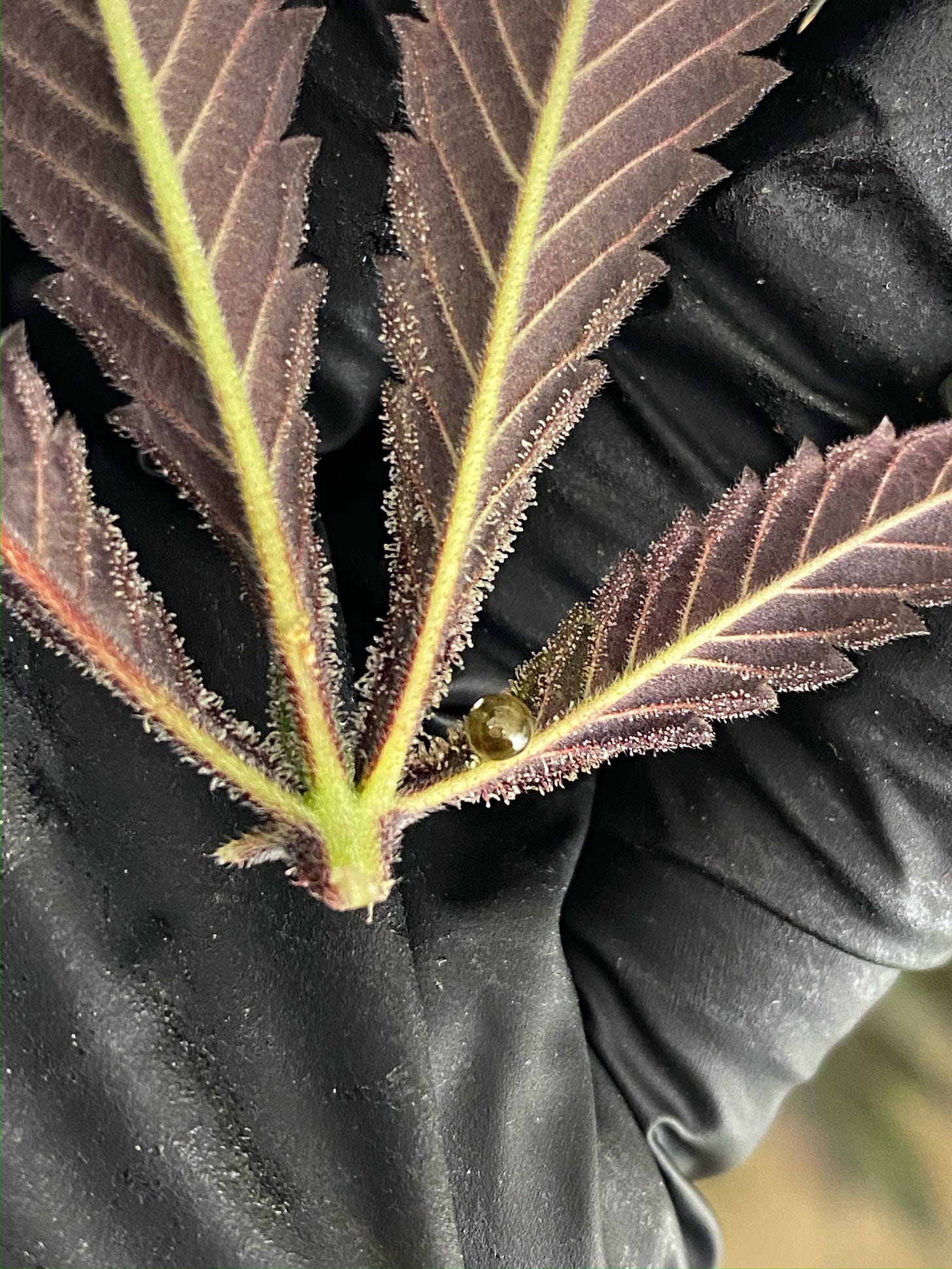Plant Guttation
What Is It & What It Means
Words by Colin Gordon & Ben Owens
Photos by Lovin' In Her Eyes
Guttation is a process where plants excrete excess sticky, sap-like syrup full of trace minerals and sugars from their leaves, often in the form of droplets at the tip of the leaf, due to root pressure in the plant.

Some plants just produce more of it than others. There was a White Widow cut circulated in Colorado in late 2000s-early 2010s, for example, that always had visible guttation on it.
While it's usually not a big deal and can often be a sign of an healthy plant, guttation can also be an indicator of low transpiration rates and high soil moisture content.
This causes root pressure to build up, leading to the release of excess water through specialized structures called hydathodes in the leaf tissue. It can also be an indicator of over-watering, as the substrate cannot properly regulate the moisture content, affecting uptake and root pressure.

Guttation will most likely occur in 2 situations:
- In young, rapidly growing plants with high water uptake and high humidity.
- During periods of low light intensity and high soil moisture, when the plant is not transpiring water at a high enough rate.
In both cases, humidity is the lever you can use to adjust transpiration and uptake.
Ample ventilation and circulation help maintain proper humidity and VPD in the space and will help minimize guttation in your crops.
Additionally, its good practice to avoid over-watering and check your substrate's moisture content to prevent guttation-causing root pressure from building up and other potential problems.
Subscribe to our Substack to receive new content automatically
This article is featured in Vol. 6 of The ETHOS Magazine.
Grab a collector's edition of the ETHOS magazine in print HERE.